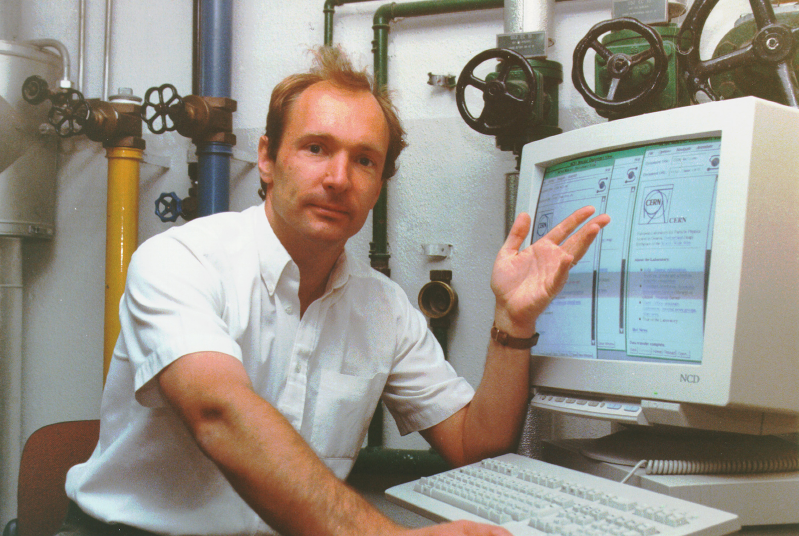 (Study.com, 2012)
(Study.com, 2012)
It all started back on 8th June 1955 when Tim Berners-Lee was born. Raised by Lee-Woods and Conway Berners-Lee (KidsKonnect, 2018) who were both computer scientists - so from an early age he had his mind set on which pathway he was going to follow. His early knowledge of electronics came from playing around with his model railways and focusing on the interactivity of them. (famousscientists.org, 2021).
 (www.bbc.co.uk, n.d.)
(www.bbc.co.uk, n.d.)
He spent most of his early life in and around London, especially with his education starting in Sheen Mount Primary School, which since leaving have unveiled a new hall in his honour. (KidsKonnect, 2018). After primary he started secondary education at Emanuel School in Wandsworth where he learned about computer science whilst he was doing his O-levels. He fully found himself when he was doing his degree in Oxford’s Queen’s College, and was often found investing things in his room, one example was when he was caught creating a computer out of an old television set, which he bought from a repair shop. (KidsKonnect, 2018)
 (Chant, 2021)
(Chant, 2021)
After obtaining his bachelor's degree in physics at Oxford, he started his career at a
telecommunications company called Plessey. Whilst here one of his first official inventions involved
the innovation of a typesetting software for printers. During this period Tim Berners-Lee spent a lot
of his time working on distributed transaction systems & message relays. (famousscientists.org,
2021). By this stage he already had quite an established knowledge in industry which he would use
to go further and invent innovations which would later change the world.





